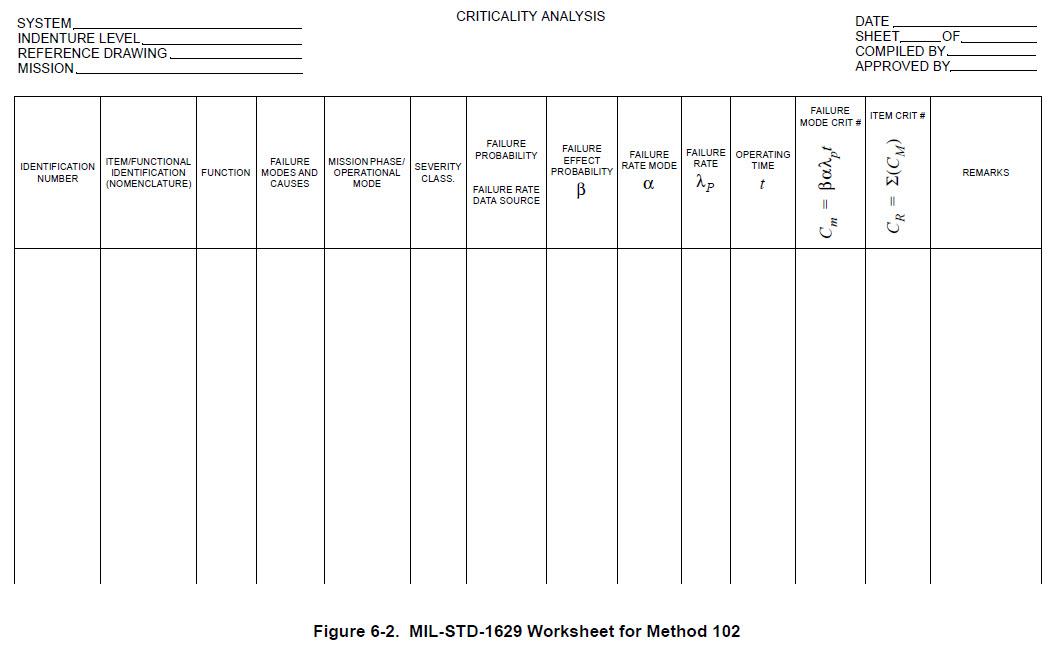Quantitative Approach to Criticality
A quantitative approach to criticality analysis uses the same failure rate data sources as other reliability and maintainability analyses. When system-specific failure rate data is not available, Task 102 of MIL-STD-1629 indicates that base failure rates and all failure rate adjustment factors are to be derived from MIL-HDBK-217 wherever possible.
|
|
Failure Mode
Criticality
Although MIL-HDBK-217 is no longer being supported by the U.S. military, it is still heavily used by both military and commercial manufacturers.
|
The Task 102 worksheet in Figure 6-2 applies a quantitative approach to criticality analysis.

Although similar to the Task 101 worksheet, the Task 102 worksheet displays columns necessary for calculating the probability of a failure mode occurring for each possible cause. These failure probability columns are described in Table 6-6.
Column | Description |
|---|---|
Failure Probability/ Failure Rate Data Sources | Failure rate probability of occurrence is listed when failure modes are assessed in terms of probability of occurrence. When failure rate data is used in the calculation of criticality numbers, list the data sources of these failure rates. |
Failure Effect Probability (β) | Failure effect probability (β) values are the conditional probability that the failure effect will result in the identified criticality classification, given that the failure mode occurs. Guidelines for assigning β values for Task 102 appear in MIL-STD-1629. |
Failure Mode Ratio (α) | Fraction of the item failure rate (λp) apportioned to the failure mode under consideration. The failure mode ratio, which is expressed as a decimal fraction, is best obtained from field data representative of the particular item in application. However, generic component failure rate data or failure rate data from lab or simulation studies (or from similar systems/processes) can be used. When failure mode data is not available, the α values shall represent the analyst’s judgment based upon an analysis of the item’s functions. Assuming that failure modes are mutually exclusive and complete, the sum of the failure mode ratios equal 1.0. If the modes are non-exclusive, the sum of failure mode ratios can be greater than 1.0. |
Failure Rate (λp) | Part failure rate (λp) from the appropriate reliability prediction or as calculated using the procedure described in MIL-HDBK-217. Where appropriate, application factors (ΠA), environmental factors (ΠE) and other pi factors that may be required to adjust for differences in operating stresses shall be applied to the base failure rates (λb) obtained from handbooks or other reference materials. List values of all pi factors used in computing λp. |
Operating Time (t) | Operating time in hours or number of operating cycles of the item per mission as derived from the system definition. |
Failure Mode Criticality Cm=βαλpt | Value of the failure mode criticality number Cm, which is the portion of the criticality number for the item due to one of its failure modes under a particular severity classification. The formula for calculating Cm is explained more fully after this table. |
Item Criticality Cr=ΣCm | The second criticality number calculation for the item under analysis, which is the number of system failures of a specific type expected due to the item’s failure modes. The formula for calculating Cr is explained more fully after this table. Cm |